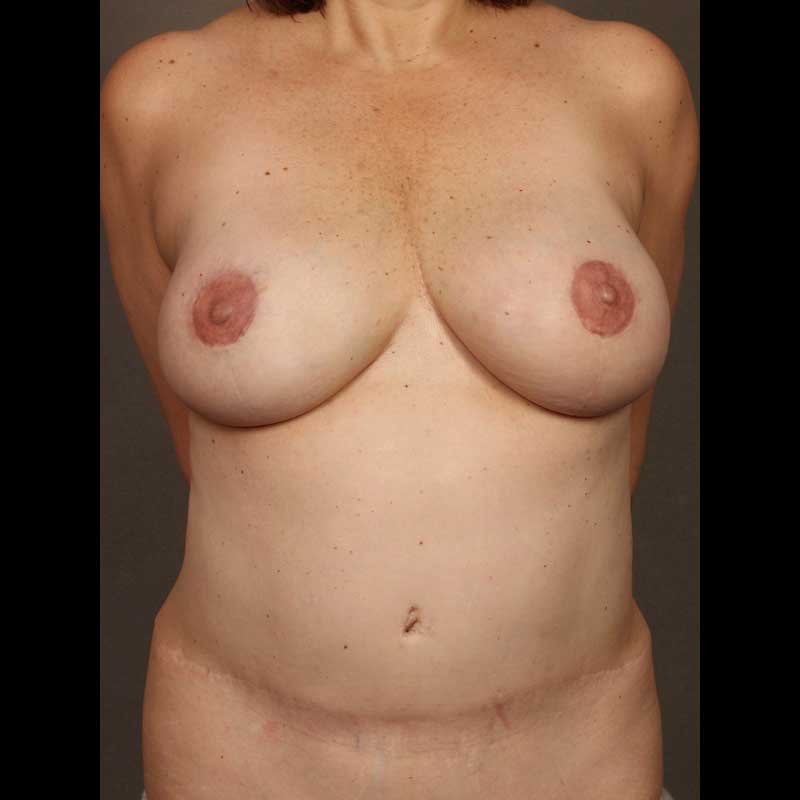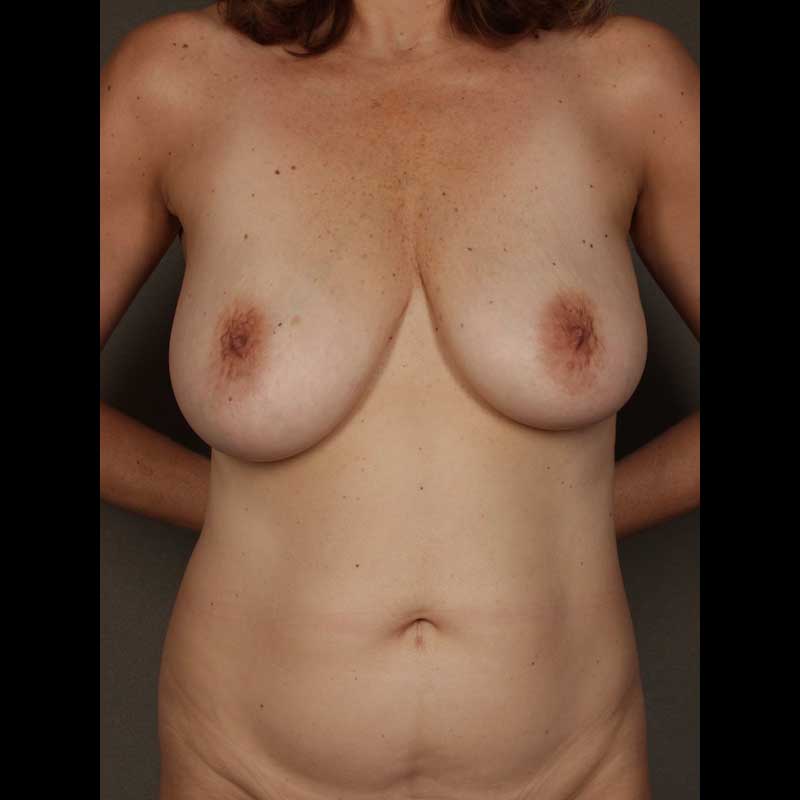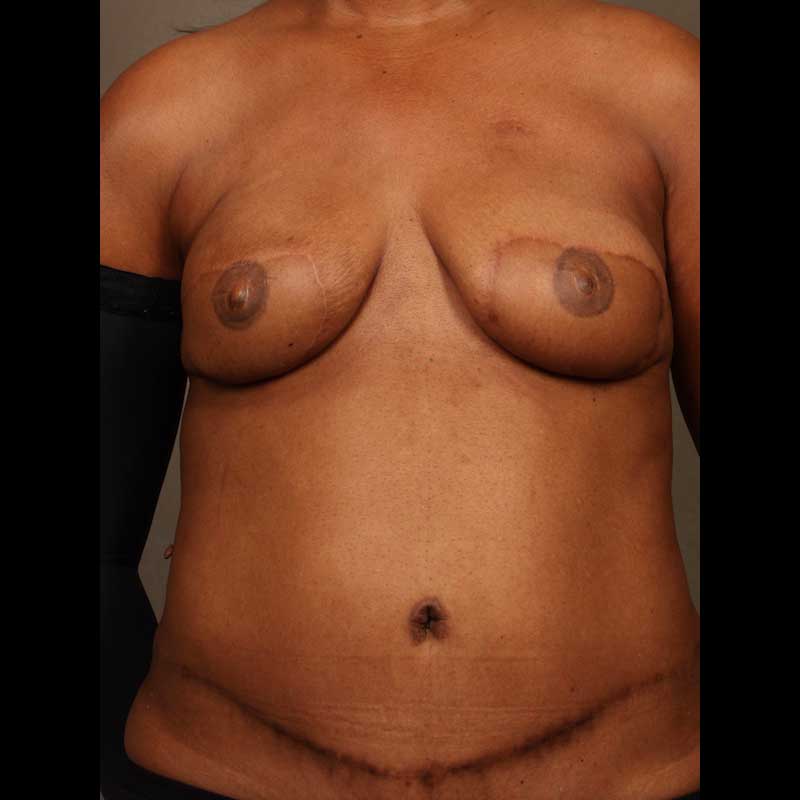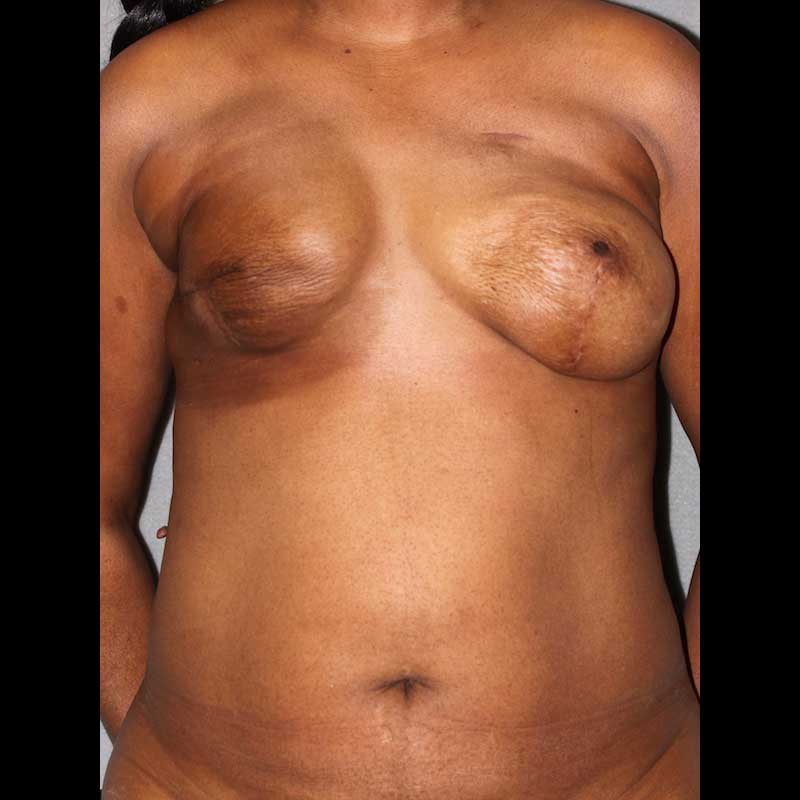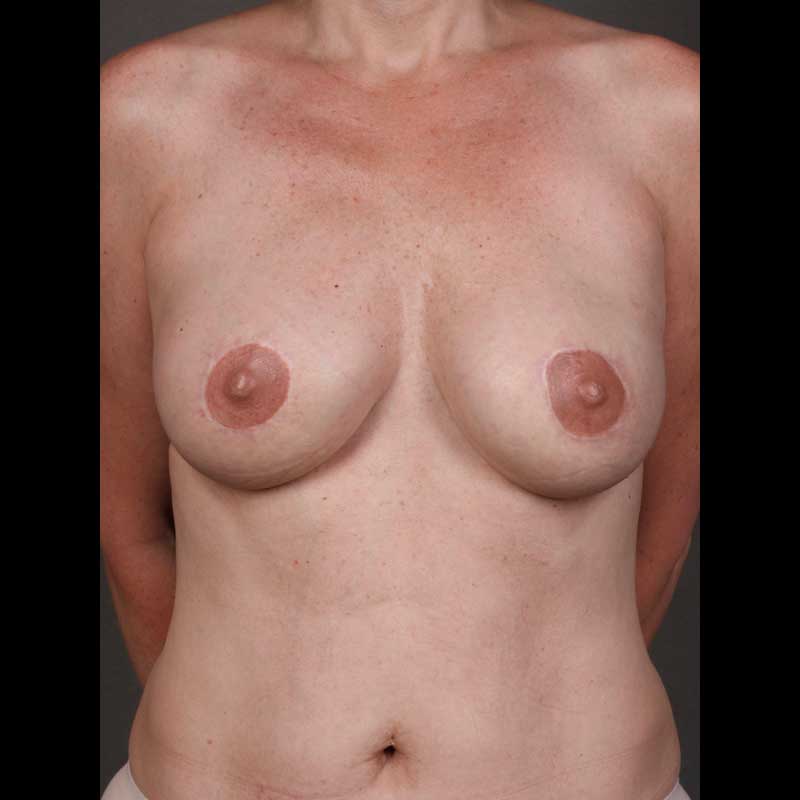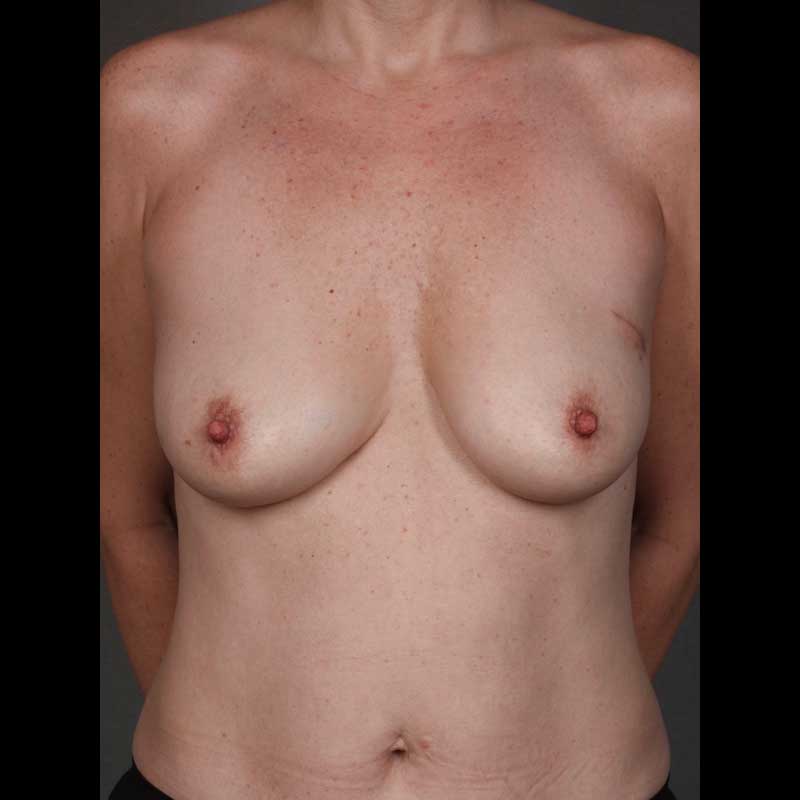Summary
Fat grafting can provide a stable, natural improvement to reconstructed breast contour in both natural tissue and implant breast reconstruction patients. Transferring fat from one area of the body to the reconstructed breast is a minimally invasive outpatient procedure.
Our surgeons use liposuction to harvest fat from common donor sites, like the abdomen, thighs, and hips. Once the fat is removed, it is prepared in the operating room and grafted to restore volume in the desired area. Grafted fat gets a new blood supply and survives in the new location. The amount of fat that survives after grafting varies; some patients proceed with additional treatments to achieve the desired results. The fat that remains following a fat grafting procedure should last a lifetime.
Types of procedures
- Fat grafting after implant reconstruction: Fat grafting can improve areas of concavity along the upper and inner areas of a reconstructed breast. It can also help address issues in patients where implant contour is visible through the breast skin and those with rippling of thin skin on top of the implant.
- Fat grafting after natural tissue reconstruction: A small volume fat grafting can fill areas of concavity within a flap breast reconstruction. Larger volumes of fat can also be utilized to augment the size of a reconstructed breast.
- Breast reconstruction with fat grafting alone: In some cases, a small volume breast can be reconstructed with multiple staged fat grafting procedures.
Procedure details
- Typically performed on an outpatient basis
- Fat is harvested using liposuction
- Common donor sites include the abdomen, thighs, and hips
- Fat is prepared in the operating room for immediate grafting
- The amount of fat that survives after fat grafting varies by patient
- Desired breast contour and volume may require staged fat grafting procedures
Risks & Benefits
It is important to avoid grafting too much fat at any one time during the process of fat grafting. Limiting the volume of fat grafted each time can help avoid problems like fat necrosis, which can result in areas of firmness within the reconstructed breast. Staged fat grafting procedures allow for the best possible results for many patients. Overall, fat grafting is a safe and reliable technique that we routinely perform to help improve outcomes for our breast reconstruction patients.
Frequently Asked Questions
Can fat grafting be done at the same time as the mastectomy?
Fat grafting is not typically done at the time of mastectomy. Like other revision procedures, fat grafting is usually best done at a later stage.
I would like to have a larger reconstructed breast, but I prefer to avoid an implant. If I need more than one fat graft procedure, how long do I need to wait before my next fat grafting surgery?
As with any breast revision procedure, it is best to allow some time for healing before doing the next stage of surgery. Staged fat grafting procedures are usually done about two months apart.
